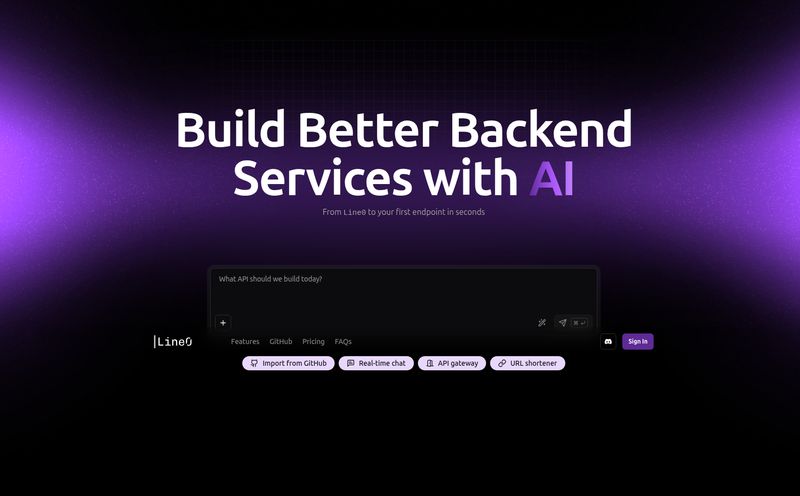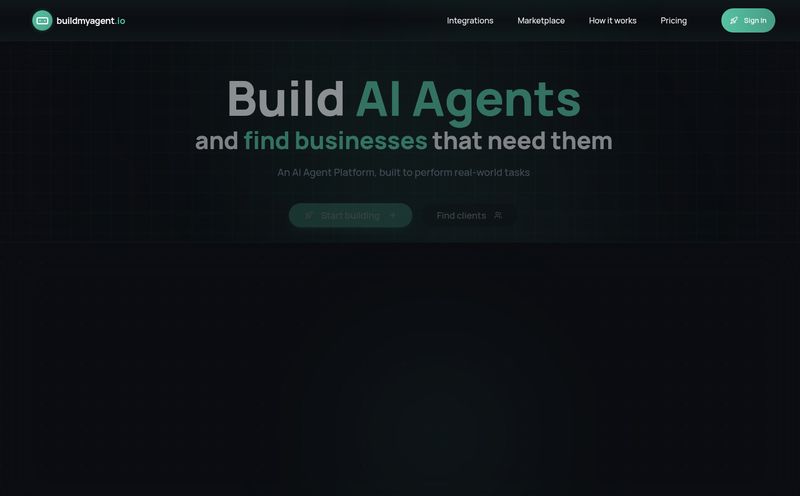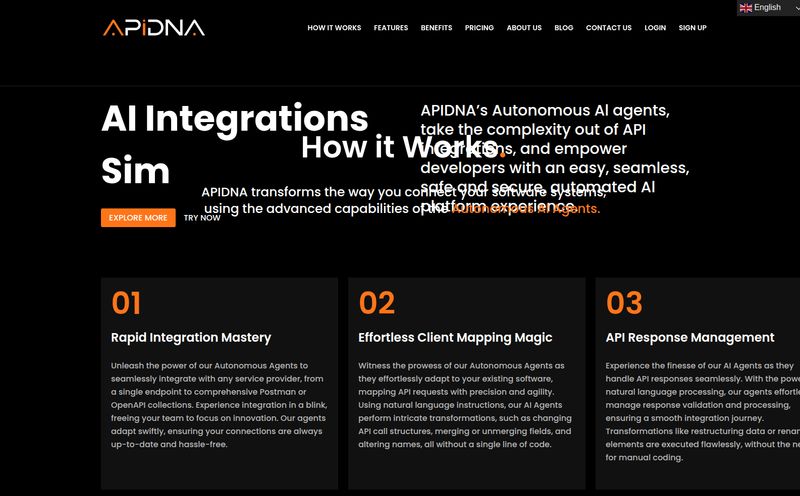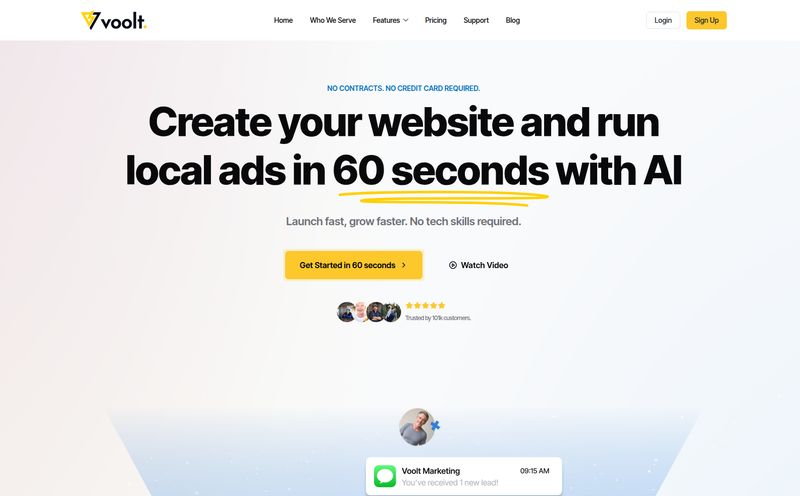Backend can be a slog. I’ve been in this game for years, and while I have a strange affection for crafting the perfect API endpoint, I’ve also lost countless weekends to wrestling with database migrations, authentication logic, and server configurations. It’s the part of the project that’s often invisible but absolutely critical. The plumbing. And nobody gets excited about plumbing, they just get mad when it breaks.
So, whenever a new tool pops up promising to make backend development faster or easier, my ears perk up. I've seen a lot of them come and go. Most are too restrictive, locking you into their ecosystem. Others are just glorified boilerplate generators that dont really save you much time. But the new wave of AI-powered tools… that’s something different. And that brings me to Podaki.
The claim is simple and bold: generate clean, secure backend code in seconds using natural language. Just tell it what you need, and it builds it. Sounds a bit like magic, right? My inner skeptic was on high alert, but my inner lazy developer was intrigued. So I decided to take a look.
What Exactly Is Podaki? (And Why Should You Care?)
At its heart, Podaki is a translator. It takes your plain English instructions—like "Create a user model with email, password, and profile picture fields"—and translates them into functional, production-ready backend code. It’s designed to handle all that messy server-side logic and infrastructure stuff that can slow down a project before it even gets off the ground.
Think of it less as a magic black box and more like an incredibly fast, slightly naive junior developer. It’s brilliant at executing well-defined tasks, but you, the senior dev, still need to provide clear direction and review the work. It’s a tool for acceleration, not complete abdication of responsibility. And for solo developers, small teams, or frontend specialists who just want a working backend now, that’s a pretty compelling proposition.

Visit Podaki
The Podaki Promise: Speed, Simplicity, and Freedom
Okay, let's get into the good stuff. What does Podaki bring to the table that actually makes a difference in a developer's day-to-day life? From my perspective, it boils down to a few major wins.
From Zero to Backend in Seconds
This is the headline feature, and it delivers. The speed is genuinely impressive. I remember a project where just setting up a basic user authentication system with password resets took me the better part of a weekend. With Podaki, you can describe that same system and have the foundational code in minutes. This is a massive change for rapid prototyping and getting an MVP out the door. Its a huge time-saver and frankly, a sanity-saver too. You get to skip the tedious setup and jump straight to building the features that make your app unique.
No More Vendor Lock-In? A Developer's Dream
This, for me, is the most important feature. I have been burned by "easy" platforms before. You build your entire application on their proprietary system, and it's great, until you need to do something they don't support. Or they triple their prices. Then you're stuck. Rebuilding from scratch is a nightmare.
Podaki sidesteps this entire problem by giving you the actual code. It's not some weird, compiled blob you can't touch. It’s clean, readable code that you can download, customize, and host wherever you want. You have total control and ownership. This means you can start with Podaki for speed and then, as your application grows and has more specific needs, your own team can take over and build on that foundation. That is a gigantic deal.
Deployment and Maintenance on Autopilot
Another area where developers often get bogged down is DevOps. Setting up servers, deploying code, managing updates – I mean, who actually enjoys that? Podaki aims to simplify this with easy cloud deployment and promises of automatic maintenance and updates. While I'd always want to keep an eye on things, the idea of offloading the most repetitive parts of infrastructure management is very appealing. It lowers the barrier to entry for people who are great coders but not necessarily systems administration experts.
Let's Be Real: The Caveats of AI-Generated Code
Alright, it can't all be sunshine and roses. As with any powerful tool, there are things you need to be aware of. This isn't a silver bullet that will solve all your problems without any effort.
Your New AI Coder Still Needs a Human Reviewer
I cannot stress this enough: you must review the code Podaki generates. AI is trained on vast datasets of existing code, which is fantastic for common patterns. However, it doesn't understand your business logic or security context in the way a human does. You still need a knowledgeable eye to scan for potential logical flaws, security vulnerabilities, or just plain weirdness. Trust, but verify. Always.
Hitting the Wall with Niche Requirements
If you're building a standard blog, e-commerce site, or SaaS app, Podaki will probably feel like a superpower. But what if your project involves some obscure third-party API, a highly custom data processing pipeline, or some bizarre business rule that no one has ever implemented before? That’s likely where you’ll find the limits of the AI. It excels at the 80% of backend work that is common across most applications. For that other 20% of highly specialized stuff, you’ll probably be writing that code by hand. Which, thanks to no vendor lock-in, you can totally do!
So, Who Is Podaki Actually For?
After playing around with it, I have a pretty clear picture of the ideal Podaki user.
- Startups and Indie Hackers: Need to build and launch an MVP as fast as humanly (or artificially) possible? This is your tool. It lets you validate an idea without a massive upfront investment in backend development time.
- Frontend Developers: If you’re a React or Vue wizard who breaks out in a cold sweat at the thought of setting up a PostgreSQL server, Podaki could be your new best friend. It lets you generate a robust backend without having to become a backend specialist overnight.
- Agencies: For agencies that churn out websites and apps for clients, Podaki could be a massive workflow accelerator. Spinning up a new backend for each project becomes a trivial task, saving time and money.
Who isn't it for? Probably large enterprises with deeply entrenched legacy systems and very rigid, bespoke architectural requirements. They might find it useful for isolated new projects, but it's not going to replace their established teams and processes.
The Million-Dollar Question: What's the Podaki Pricing?
This is the part of the review where I'd normally break down the pricing tiers, compare them to competitors, and tell you if it's a good deal. But as of writing this, Podaki is keeping its cards close to its chest. The official website doesn't have a public pricing page yet.
This is a bit of a bummer, but not uncommon for a new tool in this space. I would expect to see a subscription model, perhaps with tiers based on the number of projects, complexity, or level of support. A generous free tier to get people hooked would also be a smart move on their part. For now, we'll have to wait and see. I'd recommend checking their site directly for the latest info.
My Final Take on Podaki
So, is Podaki a gimmick or the future? I think it’s a serious glimpse into the future of software development. It's not going to put good backend developers out of a job. What it will do is change the job. It automates the tedious, repetitive parts, freeing up developers to focus on the hard problems: complex architecture, unique business logic, and creative solutions. It’s an accelerator, a force multiplier.
The combination of speed and genuine code ownership is the killer combo. If they get the pricing right, I can see Podaki becoming a go-to tool in a lot of developers' toolkits. It's an exciting development, and one I'll be keeping a very close eye on.
Your Podaki Questions Answered
- Is Podaki a no-code platform?
- Not exactly. It's more of a low-code accelerator. While you use natural language (which is 'no code'), the output is real, editable code. This is a key difference from typical no-code platforms that hide the code from you.
- Can I use the generated code anywhere?
- Yes. This is one of its biggest strengths. You get full access to the source code, so you can host it on AWS, Google Cloud, a private server, or anywhere else you choose. You are not locked into their platform.
- Is the code generated by Podaki secure?
- It aims to generate secure code based on best practices, but you should ALWAYS have it reviewed by a human. Treat the AI as a helpful assistant, but you are ultimately responsible for the security and integrity of your application.
- Does Podaki replace backend developers?
- No. It empowers them. It takes over the boring, repetitive tasks so developers can focus on higher-level architectural and business logic problems that AI can't solve. It's a tool to make developers more efficient.
- How does Podaki handle database interactions?
- You would specify your data models in natural language (e.g., users, posts, products), and Podaki generates the necessary database schema and API endpoints (like CRUD operations) to interact with that data.
- Where can I find information on Podaki's pricing?
- As of now, pricing information isn't publicly available. The best approach is to visit the official Podaki website for the most current details or to join their waitlist if one is available.
Reference and Sources
- Official Website: While I can't link directly to a site that may not exist or is in early stages, you should search for "Podaki AI Code Generator" to find their official homepage.
- For more on the perils of vendor lock-in, Martin Fowler's articles on software architecture are always a great read. A quick search for "Martin Fowler vendor lock-in" will give you some deep technical perspective.



